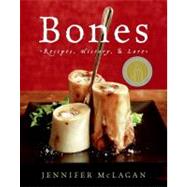
The New copy of this book will include any supplemental materials advertised. Please check the title of the book to determine if it should include any access cards, study guides, lab manuals, CDs, etc.
The Used, Rental and eBook copies of this book are not guaranteed to include any supplemental materials. Typically, only the book itself is included. This is true even if the title states it includes any access cards, study guides, lab manuals, CDs, etc.
The guinea hen is a West African relative of the chicken and partridge, originally from Guinea. It has a gamey taste and can dry out easily because it has little fat. Cooking the bird in a covered pot and adding fat solves that problem, and raspberries match its stronger flavor. The raspberries inside the bird will tint the bird's juices red: don't let this fool you into thinking that it needs more cooking.
Ingredients:
Instructions:
Preheat the oven to 425°F (220°C). Pat the bird dry and season it inside and out with salt and pepper. Set ½ cup (62 g) of the raspberries aside and place the rest inside the hen. Truss it, then smear the skin with the softened butter.
Place the hen and the thyme in a Dutch oven or flameproof casserole. Pour in 1 cup (250 ml) water, cover, and place in the oven. Cook for 1 to 1 ¼ hours or until the thigh juices run clear when pierced with a skewer or an instant-read thermometer inserted into the thigh reads 165°F (73°C). Transfer the hen to a platter, breast down, and cover loosely with aluminum foil.
Skim off the fat from the cooking juices and bring to a boil over medium-high heat. Add the port, raspberry jam or jelly, and vinegar and bring back to a boil, then boil for 3 to 5 minutes, until reduced to 1/3 cup (75 ml). Add any juices from the resting hen and check the seasoning. Strain the sauce through a sieve into a sauceboat and add the remaining raspberries.
Remove the trussing string, from the guinea hen. Carve and serve with the sauce.
This recipe is based on a medieval recipe recorded by Dorothy Hartley in her book Food in England. It is really a rice pudding made with barley, because at the time the recipe was written, that was the readily available grain. The barley is cooked in milk, Then enriched with bone marrow. The dish is highly nutritious, and according to Chinese medicine, the combination of barley and bone marrow is an excellent tonic for the body. If you need a pick-me-up, this is the dish for you.
The marrow must be soaked ahead of time in salted water, changed frequently to remove any traces of blood. It must be also very cold so you can finely dice it.
Ingredients:
Instructions:
Pour the milk into a medium saucepan and add the barley, sugar, currants, and salt. Bring to a boil over medium-high heat. Lower the heat, cover, and simmer very gently, stirring from time to time, for 15 minutes.
Uncover the saucepan and continue to simmer very gently for another 15 minutes, or until the barley is just tender.
Remove the pan from the heat and stir in the marrow, lemon zest, and vanilla. Cover the pan and let it stand until barley has completely absorbed the milk. Serve warm or cold.
Bones
Excerpted from Bones: Recipes, History, and Lore by Jennifer McLagan
All rights reserved by the original copyright owners. Excerpts are provided for display purposes only and may not be reproduced, reprinted or distributed without the written permission of the publisher.